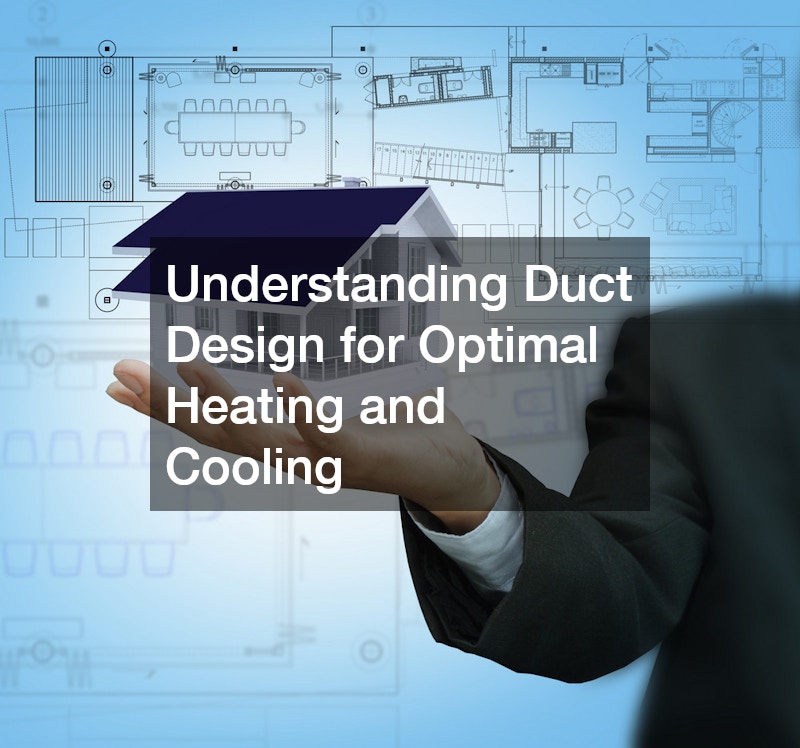
The efficiency and comfort of your home’s HVAC system rely on many factors. One of the most overlooked aspects is airflow performance, which can be compromised by improper maintenance or installation issues. This article delves into the critical components that influence airflow, offering a comprehensive guide to troubleshooting your HVAC system.
Understanding airflow dynamics can significantly reduce energy costs and enhance comfort. By focusing on specific problem areas and utilizing professional services, such as ac contractors and insulation experts, you can optimize your HVAC system’s performance. This guide reviews various elements, from duct cleaning services and ductless air conditioners to window replacement and radiant barrier roof insulation.
Read on to discover how clean ducts, proper insulation, and regular maintenance play integral roles in efficient heating and cooling. We’ll explore innovative techniques, address common errors in ac installation, and provide insights into sustainable alternatives like geothermal heating and cooling. With this knowledge, you’ll be well-equipped to tackle any HVAC challenges with confidence.
The Hidden Role of Clean Ducts in Airflow Performance
Clean ducts are crucial for optimal HVAC performance, as they provide the passage through which air travels to heat or cool your home. Regular maintenance, including professional duct cleaning services, can prevent blockages that compromise airflow. When ducts are clogged with dust or debris, it not only reduces efficiency but also increases the strain on the system, leading to frequent HVAC repair services.
Ignoring the condition of your HVAC ducts can lead to poor indoor air quality and higher energy bills. This often necessitates troubleshooting your HVAC system, which might have been avoided with proactive care. Homeowners should regularly inspect ductwork for visible dirt and consider scheduling a duct cleaning service to maintain peak performance.
Professional ac contractors can evaluate your duct system thoroughly to ensure that it functions correctly. While it might seem like a minor aspect of your HVAC setup, clean ducts are foundational to maintaining consistent and efficient airflow. Investing in routine inspections can save money in the long term by circumventing costly repairs and energy wastage.
Common Airflow Issues Post-Installation: What Homeowners Should Know

After ac installation, homeowners may face airflow issues due to several factors, such as improper sizing or poor setup by inexperienced ac contractors. Even a minor oversight during installation can lead to uneven heating or cooling across different rooms. Consequently, residents might find themselves troubleshooting their HVAC system far sooner than anticipated.
Another common problem post-installation is leaks in the ductwork, which can occur if the ducts are not properly sealed. These leaks allow conditioned air to escape, reducing overall system efficiency and increasing energy consumption. Regular inspections and repairs are essential to ensuring that your system operates as intended.
Homeowners should also be aware of the impact that improperly balanced air distribution can have on comfort levels. Sometimes, simply adjusting the balance of air in your HVAC system can resolve issues without further invasive work. By identifying and addressing these common problems early, homeowners can optimize their HVAC system’s performance and energy efficiency.
How Insulation Choices Impact Your HVAC Efficiency
Your choice of insulation can drastically impact the efficiency of your HVAC system. Effective insulation minimizes the loss of conditioned air, allowing your system to maintain desired temperatures with less energy. For instance, radiant barrier roof insulation can reflect heat away during the summer, reducing cooling demands and lowering electricity bills.
Consulting with insulation experts when selecting materials ensures that you choose the best insulation for your specific environment and needs. Poor insulation choices can lead to heat loss during winter or excessive heat gain in summer, forcing your HVAC system to work harder. Proper insulation not only enhances comfort but also reduces the need for extensive troubleshooting of your HVAC system.
It’s also worth noting the importance of coordination between HVAC installation and insulation. If not properly synchronized, even the best systems will fall short of optimum performance. Homeowners should work with professionals who understand the synergy between insulation and HVAC efficiency to achieve the best results possible.
Enhancing Comfort: The Influence of Windows on Airflow Dynamics

Windows play a significant role in maintaining comfortable airflow within a home. Poorly insulated or improperly fitted windows can create drafts, causing your HVAC system to work harder to maintain a consistent temperature. Window replacement or repair services can dramatically improve this situation by reducing drafts and enhancing the building’s overall insulation.
When considering energy efficiency, it’s essential to examine your home’s windows as an integral component of the HVAC system’s ecosystem. High-quality windows with double glazing or energy-efficient coatings can significantly reduce forced air fluctuations. This makes your heating and cooling system more efficient and less frequent in need of troubleshooting.
If window repairs are necessary, consulting a professional window repair service can provide effective solutions that enhance airflow dynamics. The impact of windows on energy loss is often undervalued but is crucial in achieving sustainable HVAC performance. Investing in high-performance windows minimizes energy waste and complements your system’s efforts to maintain comfort at a lower cost.
Understanding Duct Design for Optimal Heating and Cooling

The design and layout of ductwork are imperative to achieving efficient heating and cooling throughout a home. Missteps in ac installation, such as improperly sized ducts, can lead to problems with airflow distribution. Inaccurate duct design can result in some rooms being too warm while others remain too cold, requiring frequent troubleshooting of the HVAC system.
An efficient duct design should allow air to flow freely to all parts of the home, reducing the load on the HVAC system. Working with knowledgeable HVAC repair services ensures that the ductwork is appropriately sized and installed for maximal airflow. Correct design reduces the likelihood of pressure imbalances that strain the system over time.
Regular assessments and updates to duct designs can vastly improve a system’s performance. Modern innovations allow for flexible and efficient designs that work seamlessly with both traditional and ductless air conditioner systems. By optimizing the duct layout, homeowners can enjoy an evenly heated or cooled living space, which is both comfortable and cost-efficient.
When to Seek Help for Airflow Troubles in Your System

Recognizing when issues with your HVAC system require professional intervention is crucial for maintaining its efficiency and longevity. While some homeowners might attempt troubleshooting HVAC system issues themselves, persistent problems often necessitate the expertise of a professional. Frequent issues like inconsistent room temperatures or noisy operation may indicate a deeper problem that requires HVAC repair services.
Situations such as refrigerant leaks, frequent cycling, or a sudden rise in utility bills are signs that call for the immediate attention of skilled ac contractors. Timely professional intervention can prevent minor issues from escalating into costly repairs or system replacements. An experienced technician can assess whether the problem lies with the ductwork, insulation, or the HVAC unit itself.
When repairs are beyond DIY scope, engaging well-regarded professionals ensures that solutions are applied accurately and efficiently. Simple maintenance or repair work, like duct cleaning services or recalibration, may suffice in some cases. Knowing when to call for expert help is pivotal in safeguarding your HVAC investment.
Innovative Insulation Techniques for Better Airflow Management
Recent advances in insulation technology offer homeowners various options to enhance HVAC system efficiency. Techniques such as spray foam insulation, reflective coatings, and radiant barrier roof insulation can be tailored to suit different climatic conditions. These innovations help maintain consistent indoor temperatures, reducing the need for excessive cooling or heating.
Innovative insulation approaches improve overall airflow management, thus reducing strain on HVAC units. By consulting with insulation experts, homeowners can determine which techniques are best suited for their specific needs. Enhanced insulation not only improves energy efficiency but also contributes to a more sustainable home environment.
Utilizing cutting-edge insulation tactics aligns with the trend toward greener, more resource-efficient homes. Reduced reliance on traditional heating and cooling systems leads to fewer emissions and lower operational costs. A forward-thinking approach to insulation can significantly enhance both comfort and ecological footprints.
Exploring Alternatives: Airflow Solutions Beyond Traditional Systems
Many homeowners are exploring alternatives to improve airflow without depending solely on conventional HVAC systems. Options like geothermal heating and cooling, as well as ductless air conditioners, provide efficient solutions tailored to specific needs. These alternatives can offer improved energy efficiency and reduced environmental impact compared to traditional systems.
Geothermal systems utilize the earth’s stable temperature to regulate indoor climates, providing a sustainable alternative to conventional methods. Ductless air conditioners, meanwhile, offer targeted cooling solutions for homes without extensive ductwork. Both approaches can significantly reduce the need for troubleshooting HVAC system problems.
Exploring these alternatives not only broadens your options but also allows for energy savings and enhanced comfort. Professional guidance from HVAC repair services or ac contractors can help determine the best course of action for your specific circumstances. For those seeking to innovate, these solutions offer robust and reliable alternatives to traditional systems.
The Importance of Maintenance in Sustaining Airflow Quality
Regular maintenance is essential to preserve airflow quality and prevent complications that necessitate extensive troubleshooting. Routine inspections, timely filter replacement, and duct cleaning services can prevent many common airflow issues. A well-maintained system not only performs better but is also less prone to breakdowns and costly repairs.
Maintenance helps detect minor issues before they evolve into more significant problems, such as system failures or inefficient operation. Scheduling regular check-ups with qualified HVAC repair services ensures that your system remains in top condition. These preventative measures are instrumental in prolonging the life span and efficiency of your HVAC system.
Investing in routine upkeep is a cost-effective approach to managing your home’s climate needs. By catching issues early, homeowners can avoid the inconvenience and expense of extensive repairs. Regular maintenance helps sustain airflow quality, contributing to a more comfortable and energy-efficient home.
Seasonal Factors That Can Affect Your HVAC System’s Airflow
Seasons can significantly impact your HVAC system’s airflow, requiring adjustments or additional care to maintain performance. In winter, for example, cold temperatures can lead to heat loss if ducts aren’t adequately insulated, impacting overall efficiency. Or, during the summer, elevated heat can cause your system to work harder, potentially exposing weaknesses in duct insulation or design.
Taking proactive steps to adjust your system for seasonal changes can alleviate stress on your HVAC components. Recommendations include checking insulation, windows, and ductwork for vulnerabilities that may be exacerbated by weather conditions. Being attentive to these seasonal factors helps you maintain consistent airflow and energy efficiency year-round.
Scheduling a seasonal inspection with HVAC repair services can highlight any necessary adjustments or preventive steps to take. Timely interventions prevent seasonal challenges from unduly affecting your system’s operation, ensuring readiness ahead of temperature shifts. By understanding and accommodating these variations, homeowners can secure continuous optimal functionality.
Simple Fixes for Common Airflow Restrictions
Simple solutions can often rectify common airflow restrictions within a household HVAC system. For instance, regularly changing air filters is an easy yet effective method to improve airflow and hinder dust buildup. Clogged filters can reduce airflow and put added strain on the system, making timely replacements critical.
Checking the thermostat settings and ensuring they are correctly programmed for seasonal changes can also help optimize system efficiency. Correct thermostat settings can better regulate system operations and prevent unnecessary energy use. Simple recalibrations sometimes resolve issues that seem significant at first glance.
Reassessing and repairing window seals is another straightforward approach to optimizing airflow performance. Poorly sealed windows can permit outdoor air to infiltrate, complicating temperature control efforts. Engaging with a window repair service ensures that windows contribute positively to your overall HVAC efficiency, rather than detracting from it.
How Environmental Changes Impact Your Home’s Airflow
Environmental changes, such as increased humidity or unexpected temperature shifts, can influence your home’s airflow dynamics. High humidity levels can make it more difficult for your system to regulate temperatures effectively, sometimes necessitating troubleshooting of your HVAC system. Areas experiencing regular weather changes may need more frequent inspections to adapt HVAC operations accordingly.
Natural obstructions, like vegetation encroaching on external units or sediment buildup within ducts, may compound airflow inefficiencies. Keeping the surrounding area of your HVAC units clear and regularly checking ducts combats these natural impediments. As environmental changes unfold, agile adaptation is key to preserving optimal airflow conditions.
By understanding how environmental factors can alter operation, homeowners can preemptively address potential inefficiencies. Collaboration with knowledgeable HVAC repair services provides guidance on necessary adjustments for environmental changes. Staying proactive about how external conditions influence internal climates supports enduring system effectiveness.
Tips for Identifying Airflow Issues Before They Escalate
Early identification of airflow issues can mitigate the risk of severe complications and expensive repairs. Simple indicators like a rise in energy bills, unusual noises, or inconsistent room temperatures signal the need for attention. Identifying these signs early is crucial in troubleshooting your HVAC system efficiently.
Visual inspections of air filters, ducts, and registers can offer insights into potential airflow obstacles. Even if no visible signs of trouble appear, engaging with ac contractors for a professional assessment can provide reassurance or highlight unseen concerns. Taking a proactive stance on identifying issues early in their development phases saves homeowners unnecessary hassle.
Another approach is keeping track of the HVAC system’s operation and setting reminders for regular maintenance activities. This scheduled vigilance ensures that potential issues don’t remain undetected long enough to escalate. Identifying and addressing these issues promptly ensures that your system remains reliable and effective over its operational lifetime.
Effective management of your HVAC system hinges on understanding the many factors influencing airflow performance, from proper duct maintenance and thoughtful insulation decisions to addressing environmental concerns. By recognizing and acting on these critical considerations, homeowners can significantly enhance comfort and system efficiency. Employing the expertise of skilled professionals, such as ac contractors and HVAC repair services, when required guarantees that solutions are well-implemented.
As this article outlines, consistent attention to various aspects like ducts, windows, and insulation, partnered with regular maintenance, forms the core approach to troubleshooting your HVAC system effectively. These considerations make significant impacts and ensure optimal comfort and operational efficiency. With proper care and understanding, homeowners can enjoy the long-term benefits of sustained system efficiency and reduced costs.
Empowered with these insights and strategies, you’re better equipped to achieve and maintain superior HVAC performance. Whether through professional intervention or innovative adjustments, there are numerous paths to pursue ensuring ongoing system reliability. Stay proactive, stay informed, and maintain your commitment to efficiency and comfort as you navigate your HVAC management responsibilities.






